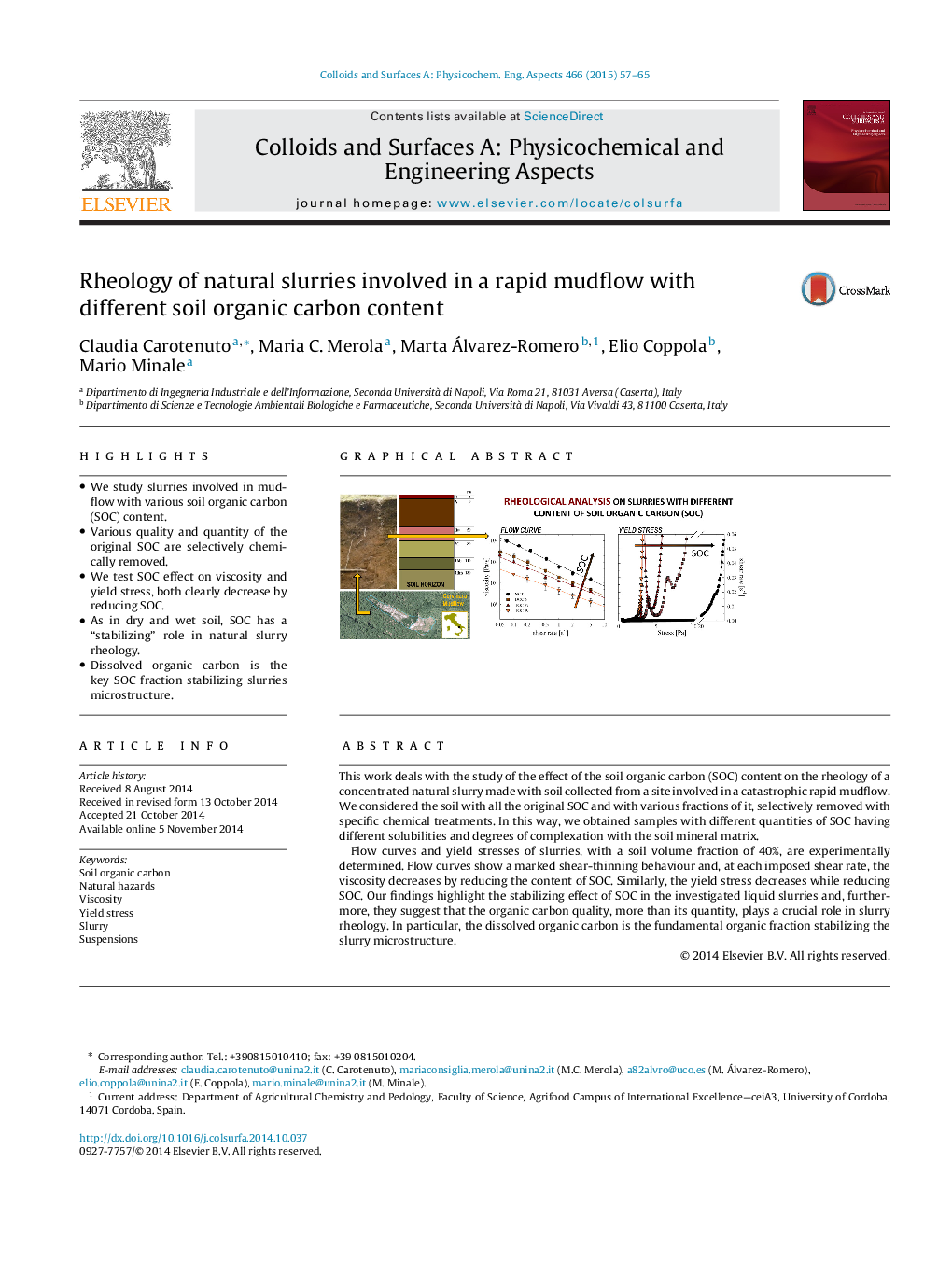| Article ID | Journal | Published Year | Pages | File Type |
|---|---|---|---|---|
| 592416 | Colloids and Surfaces A: Physicochemical and Engineering Aspects | 2015 | 9 Pages |
•We study slurries involved in mudflow with various soil organic carbon (SOC) content.•Various quality and quantity of the original SOC are selectively chemically removed.•We test SOC effect on viscosity and yield stress, both clearly decrease by reducing SOC.•As in dry and wet soil, SOC has a “stabilizing” role in natural slurry rheology.•Dissolved organic carbon is the key SOC fraction stabilizing slurries microstructure.
This work deals with the study of the effect of the soil organic carbon (SOC) content on the rheology of a concentrated natural slurry made with soil collected from a site involved in a catastrophic rapid mudflow. We considered the soil with all the original SOC and with various fractions of it, selectively removed with specific chemical treatments. In this way, we obtained samples with different quantities of SOC having different solubilities and degrees of complexation with the soil mineral matrix.Flow curves and yield stresses of slurries, with a soil volume fraction of 40%, are experimentally determined. Flow curves show a marked shear-thinning behaviour and, at each imposed shear rate, the viscosity decreases by reducing the content of SOC. Similarly, the yield stress decreases while reducing SOC. Our findings highlight the stabilizing effect of SOC in the investigated liquid slurries and, furthermore, they suggest that the organic carbon quality, more than its quantity, plays a crucial role in slurry rheology. In particular, the dissolved organic carbon is the fundamental organic fraction stabilizing the slurry microstructure.
Graphical abstractFigure optionsDownload full-size imageDownload as PowerPoint slide
